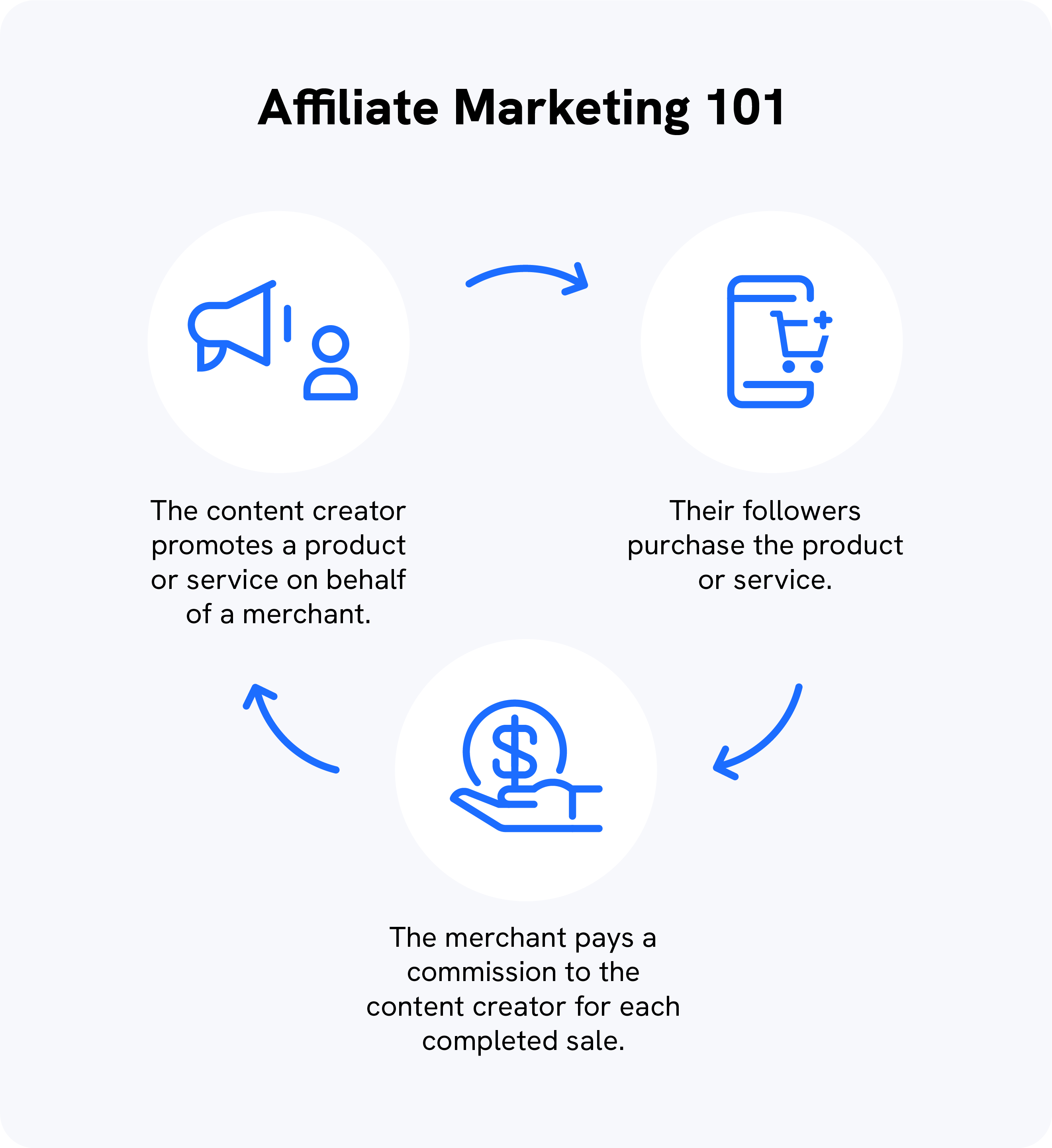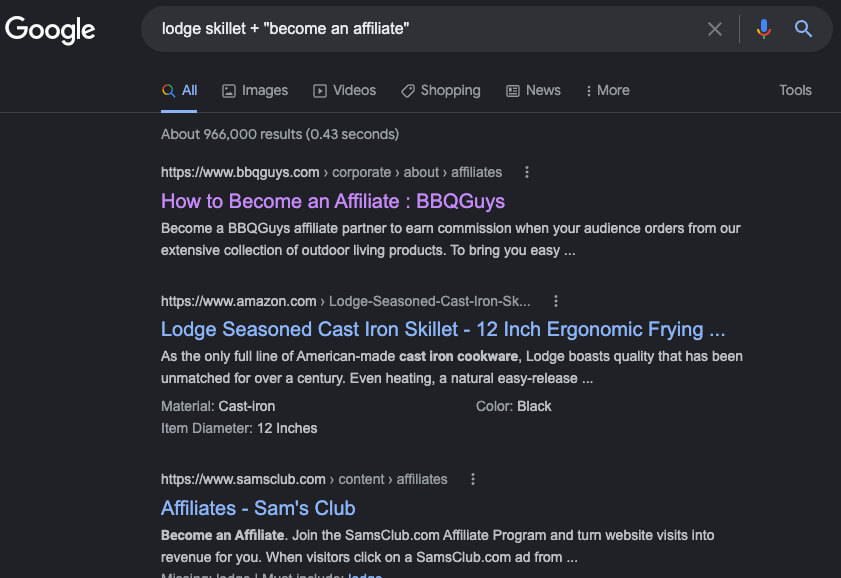Your Facebook group keeps growing, and your members are engaging in increased amount — so much so that it starts to have a real sense of community.
The time might be just right for you to start exploring how to monetize all this attention from your dedicated Facebook following.
That’s right, we’re talking about monetizing Facebook groups, and we’ve compiled the 9 best ways you can monetize your Facebook group:
How to Make Money with a Facebook Group
- Launch a Paid Membership Service
- Sell Products and Services to Members
- Engage in Affiliate Marketing
- Make Paid Webinars
- Sell Tickets to In-Person Events
- Start to Advertise
- Offer Coaching and Workshop Service
- Consider Brand Partnerships
- Sell Online Courses
Action!
1. Launch a Paid Membership Service
One of the best ways to monetize your Facebook group is by offering access to an independent paid, premium membership platform.
You can do this by using a to move to a platform like Uscreen to house and manage your paid community and offer a paid membership model.
A paid membership service provides a consistent source of income, while alternatives like ads and affiliate links are unreliable (more on those later).
How much you make is directly related to your number of subscribers, leaving you with a dependable paycheck.
You get full control over your community, content, and price structure. Your followers get access to exclusive, high-quality content. And you all get the benefits of an easy-to-use platform.
For instance, with Uscreen’s platform, you get:
- Lead generation and conversion assistance.
- Analytics tools for tracking interactions.
- A seamless monetization platform.
This all combines to make a turn-key service that works for people of all skill levels.
Turn your community into a steady income stream. This guide provides detailed steps on how to successfully sell memberships.
2. Sell Products to Members
Does it feel like every content creator nowadays has something extra to sell? Well, that’s because it adds to their income and keeps their audience engaged.
That’s exactly what you want when monetizing Facebook.
You know your Facebook group better than anyone. Use that insider knowledge to pinpoint the products they’re most likely to be receptive to.
Think about selling branded clothing. Some fans are hesitant to donate money, but most love representing their favorite creators.
Selling a shirt, hoodie, or hat gets you the conversion you need with the added bonus of passive advertising. That buyer’s social circle may be unaware of your group and seeing your merch may bring it up naturally in conversation.
Get creative with graphics by branching out from only using your logo. Your group’s inside jokes can be used to make appealing clothing that is more likely to sell.
If your Facebook group focuses on a niche industry, you can promote and sell relevant products too.
It can be hard to tell which products are worth buying when getting into a new hobby. Some products are overpriced, and others are made too cheap to be of any use.
Since you’re a trusted source of information, your members will value your recommendations. Partner with a manufacturer or set up a dropshipping store for your quality products.
Depending on your niche you could sell:
- Resistance bands, workout supplements, and athletic wear, if you’ve built an online fitness community.
- Cooking knives, pots, and pans, if you’ve built a cooking community online.
- Paintbrushes and canvases, if you built an artist community online.
Some of these products will have greater startup costs than others.
Start out small to test the potential demand for custom merch. Gradually ramp up production to avoid permanently having a garage full of widgets.
3. Engage in Affiliate Marketing
The startup costs of selling custom products can often be too expensive for many people to afford. Joining an affiliate network enables you to sell other companies’ products while avoiding those upfront costs.
You might have already taken part in an affiliate network without being aware. Have you ever clicked through a link by a content creator that took you to a product on Amazon?
Chances are that the content creator was an affiliate of Amazon’s network. If you ended up making a purchase then you also helped support the creator.

Affiliate marketing works by you, the affiliate, linking to a product on your webpage. If any of your group members use that link to make a purchase, you will receive a commission.
Affiliate marketing can also take the form of app downloads or surveys, but the basics stay the same. You’re paid based on your audience completing an action.
Affiliate marketing requires less labor than selling your own products and is much closer to a passive income from your Facebook group’s monetization.
If you’re already recommending products to your members, becoming an affiliate is like finding money in your coat (only more profitable).
Joining affiliate markets, like Amazon or Clickbank, will set you up with many different products to promote.
Or, you can seek out specific products by searching for them by name.

Networks offer different payout structures, so shop for the one that suits your niche best.
4. Make Paid Webinars
If you have a knack for streaming or presenting in front of an audience, one way to monetize a Facebook group is to create paid webinars.
Many platforms, including Uscreen, can host these live events and allow you to share your expertise with a dedicated audience. These live events are fairly simple to set up and allow you to share your expertise with large audiences.
You’ll want to provide the best experience possible for your audience to make sure they return for the next one. The best way to do that is by preparing for it.
Go through your presentation with a fine-toothed comb to make sure it’s free of errors. Minor mistakes may be tolerable with free content, but premium content demands perfection.
Practice presenting to your friends or family. Bribe them with drinks and snacks if you have to. It’s worth it to get comfortable with your lines, and we’re pretty sure it’s legal.
An outsider’s perspective is invaluable at this stage. Their eyes can spot errors you’ve grown blind to. They can also raise questions you‘ll probably receive during the event.
While it might feel embarrassing at first, it will do wonders for your confidence come showtime.
5. Sell Tickets to In-Person Events
Expand your options for reaching people outside the digital world by meeting your group in the real world — and make money as you do it.
But I started a Facebook group to avoid meeting people in person!
Well, if you want to make money from your Facebook group, then you might need to get out of your comfort zone. Meeting your group where they feel comfortable should take priority.
In-person events bring you physically close and can lead to a connection that is hard to achieve through a screen.
For your first event, pick a location with maximum impact. Pick a city near the most community members. They’ll be more likely to buy the ticket if airfare is out of the picture.
Your venue may be able to assist with registration for the event. There is also the option to use a third party, like Eventbrite, which makes it easy to manage purchases.
Consider recruiting guest speakers that can broaden the reach of your event. Each speaker can bring their fans to the event and help shoulder the burden of entertaining the audience.
6. Start to Advertise
To make money from a Facebook group from advertising you’ll need a large following. Advertisers typically want to see your group membership above 25,000.
If you meet this threshold, then simply put a message in your Facebook groups bio, something along the lines of:
Send me a private message to arrange advertising.
It delivers the message without taking up a lot of real estate on the page.
You can also include specifics about your desired rates and what they include. This can weed out any advertisers looking to lowball you.
On the flip side, if your posted rates are lower than what advertisers are willing to spend, you’ll miss out on extra cash.
Experiment with messages of both types to discover which is right for your needs.
If your Facebook group is under the 25,000 member threshold, you can try advertising for yourself. A small investment on your part can bring in new members and get you over the hump.
You can look for affordable opportunities on other Facebook group pages or start an ad campaign.
Facebook Page Like campaigns are rarely used these days, but they’re perfect for growing a following. A like is a simple thing to ask of someone, and it opens the door for further targeting.
Follow up with anyone who likes your page and invite them to join. They’ve already displayed a passive interest in your group. A direct invitation may be all it takes for them to take the plunge.
7. Offer Coaching and Workshop Services
Similar to how it’s difficult for a novice to tell a good product apart from an inferior one, it can be difficult to tell an expert apart from a scammer.
Your Facebook group members stay in your community because they see its value and trust you. Offering to coach them personally can save them from costly blunders.
These one-on-one opportunities also serve to improve brand loyalty. Your members will feel closer to you, and their success will be tied to your service.
Coaching can make money with a Facebook group in pretty much any niche. Even topics thought to be in-person activities can translate to the virtual world.
The student can be located halfway around the world from their coach and still benefit from the coach’s instruction.
This same business plan can be applied to all sorts of professions. It might require thinking outside the box, but that’s how you’ll find success.
8. Consider Brand Partnerships
Partnering with brands and other creators can help you nail two birds with one stone. You’ll grow your audience while monetizing your Facebook group.
Facebook’s Brand Collabs Manager connects public Facebook groups with brands trying to promote their products. It works similarly to an affiliate network but with less legwork on your end.
This sponsored content is labeled as such to avoid any trickery, so your group will be well aware when something is being sold.
If you’re looking to avoid corporate interests for any reason, partnering with content creators is also an option to consider. While their advertising budget may be smaller, they bring benefits that could lead to more money down the road.
If you share content created by other people, their fans are more likely to discover your work and become your fans in the process.
As your following grows, so can the profits in your other monetization efforts. You can:
- Gain more paid subscribers.
- Ask for more money from advertisers.
- Sell more affiliate products.
- Sell more courses.
- Sell more merch.
Residual income can be even more valuable than upfront sales in the long run.
9. Sell Online Courses
Creating an online course is one of the best ways to make money with a Facebook group. You already have your target audience identified and you’re holding their attention.
But a successful course requires more than just great content. Once you complete your course, you’ll need a place to host it.
If your content is text-based, any basic hosting platform will probably get the job done.
If your content relies on video lessons, you’ll need a platform that specializes in video hosting — Uscreen, for instance.
When it comes to online courses, with Uscreen, you’re able to:
- Create your own webpage.
- Organize videos in a way that’s best for you.
- Have full control over monetization.
- Live stream with professional quality.
- Still use your affiliate network.
Basically, you’re getting all of the capabilities of a professional company while retaining control as the business owner. The way it should be.
In this guide, we’re going to walk you through everything you need to launch and grow a profitable online course membership site.
Monetizing a Facebook Group vs. Using a Community Platform
There are some pros and cons that go along with monetizing your Facebook group.
We’ve already laid out the various ways to make money while remaining on Facebook. Those are some big pros, and they’re some of the reasons why Facebook remains a powerhouse.
But as long as you remain on Facebook’s platform, you never really own that community.
Even selling the admin rights to your group is against Facebook’s terms of service. Facebook can ban your group and even your profile with little room for you to appeal.
If you get banned, you need to start over from scratch.
If you are proactive and migrate that community onto your own platform, then you can gain the ownership that an entrepreneur needs for long-term success.
You’ll be partnering with a different service provider that is more invested in your success.
How to Prepare for Facebook Group Monetization
If you want to successfully monetize Facebook groups, there are some things to do beforehand and some things to avoid.
Clean your profile of anything that might keep people from joining your group or partnering with you. Anything can be taken out of context by strangers.
Moving forward, be conscious that everything you post represents your brand. Controversial content can quickly destroy everything you’ve worked hard to build.
The rule of thumb is: If you’re willing to publicly defend what you said then it’s probably okay to post.
Try to do this while still preserving your unique personality. That’s what sets your online community apart and draws people to you.
Get the most out of monetization by having clear targets. Ask yourself:
- What kind of members do I have?
- What are the perks of being a member?
- What might push the members away?
- What would the members want to buy?
By identifying who they are and what they want, you can determine the best Facebook group monetizing options to pursue.
After all, since you might be converting a hobby into a business, you need to start thinking like a business.
FAQ – Making Money with Facebook Groups
Earning money from Facebook groups involves several strategies:
1. Paid Memberships: Create a subscription-based model for an exclusive community, content, or benefits for your Facebook members.
2. Product Sales: Market and sell products or services targeted for your group members.
3. Affiliate Marketing: Share affiliate links and earn commissions on any sales.
4. Webinars: Charge access to exclusive and premium webinars or training sessions.
5. Event Tickets: Host and sell in-person or online group event tickets.
6. Advertisements: Leverage a large group following to attract paid advertisements or brand sponsorships.
7. Coaching and Workshops: Offer personalized 1-on-1 or 1-to-many coaching services or educational workshops for a fee.
8. Brand Partnerships: Collaborating with brands for sponsored content or joint promotions.
9. Online Courses: Creating and selling online courses to members.
First, to start a paid membership service, ensure your group offers valuable, engaging content that members are willing to pay for. Leverage your existing members to research their needs and create an attractive offer for them.
Next, choose a platform like Uscreen to manage your paid community. Set up your membership tiers, decide on the pricing, and then promote this exclusive membership option to your Facebook group, sharing the unique benefits and exclusive content they’ll gain access to by subscribing.
No, it’s not against Facebook’s policies to generate income from your group. Facebook allows and enables group admins to earn income in different ways, as long as they comply with Facebook’s Community Standards. It’s important to ensure that any monetization method you choose is in line with Facebook’s guidelines to prevent any potential future issues with your group.
You don’t need 100s of thousands of members to start monetizing your group. What matters is to have a highly engaged community rather than a large community with low engagement. You need to focus on providing value and building trust and credibility within your community. Once you have that recognition, you can begin to monetize and generate income from your group.
Wrapping This Up
If it’s time for you to begin monetizing Facebook groups, consider pursuing more than one strategy or experimenting with a couple and stick with what’s most fruitful.
Your Facebook group likely started out as a passion project. Keep that passion with you as you transition into making it a business.
And if branching out from Facebook lines up with your goals, you might even consider building your community with Uscreen.
Build, launch and manage your membership, all in one place.






